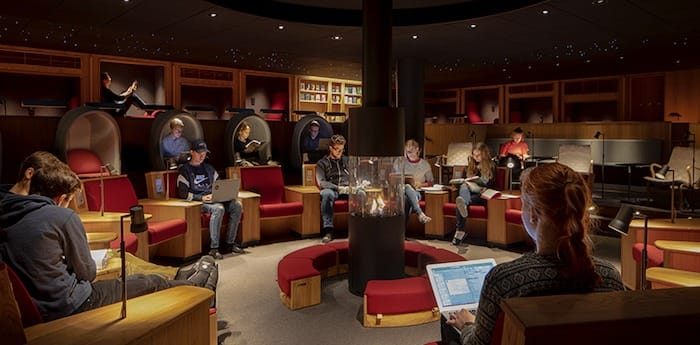The children are our future. Indoor environments promoting their health and learning should be in focus. Which perspective do we have when we design the indoor environments such as child care centers, schools and universities?

The Importance of Daylight for Humans and Children
Daylight is essential for us human beings, including our young citizens. Companies, organizations, and society are increasingly discussing how workplaces should be designed to promote wellness, productivity, and well-being. We recognize that elements like daylight, good lighting, quality air, and natural features enhance workplace environments. Equally important is the need to consider how these factors improve children’s educational settings and how they are designed today.
Daylight’s Impact on Learning
The fact is, students learn better in well-lit classrooms without the distraction of glare. A study by the Heschong Mahone Group (Daylighting in Schools, 1999) found that optimal daylight conditions can improve test scores by as much as 26%. Specifically, students with the most daylight in their classrooms progressed 20% faster on math tests and 26% faster on reading tests within one year compared to those with the least daylight.
Urbanization and the Daylight Challenge
The Growth of Cities and Its Implications
Today, more than half of the world’s population lives in cities, and if urbanization and population growth continue at the current pace, an additional 2.5 billion people are expected to live in urban areas by 2050. This trend has sparked significant interest in city densification. However, in many parts of the world, this means daylight access will become increasingly challenging. Deep buildings, dense block structures, heightened energy efficiency demands, and the repurposing of older buildings for new uses all contribute to environments where people risk insufficient daylight exposure.
Balancing Urban Benefits with Human Health
Densification and urbanization offer numerous benefits, often seen as solutions to modern challenges. For instance, they enable sustainable and efficient transportation systems. However, one of the greatest challenges today is ensuring that urbanization does not compromise human health or the quality of working, living, and learning environments.
Designing Educational Spaces with Daylight in Mind
When we design childcare centers, schools, and universities, do we prioritize the needs of children and young people, both in terms of physical layout and lighting design? Swedish architect and Swedish Light Prize winner Jonas Kjellander emphasizes that “lighting is the most important tool in designing the physical environment.” Kjellander, alongside colleagues from Sweco, a Swedish architectural firm, received the award for their project “Ekonomikum” at the prestigious Uppsala University in Sweden.
Image curtesy: https://www.sweco.se/nyheter/press/_2019/ljusdesign/

The jury stated (translated from Swedish) “The result shows a solid knowledge of the light’s interaction with color, shape and material. The project has been carried out with tremendous passion and expertise on study environments and the belief in the young person and her legitimate demands for dignity. The ergonomic and innovative light treatment integrates both function, experience and atmosphere.”
The thing is, if we design from the perspective of children, it will always be good for both the children and the adults, but if we design from the perspective of adults, we could assume that it not always will be beneficial for the children.
Designing learning environments from a children’s perspective is also smart from a social perspective; when we invest in our children and create a good childhood environment, it will affect them in terms of performance and it will also affect them as adults. So we all need to be smart and design learning environments with the kids in mind.

SUNLIGHT DEEP INTO BUILDINGS AND FAR AWAY FROM WINDOWS
With Parans’ solution you are able to create sunlight filled spaces in every building.
Thin, flexible fiber optic cables lead the sunlight far from windows and deep into the building where the sunlight from windows cannot reach. As common as it is to have windows along the facade and that way lead the natural light inside, as common it could be to lead sunlight via a Parans system deep into the building – to every room, on every floor.
Illuminate Your Space
Ready to brighten your space with natural light? Parans solar lighting system harnesses the sun’s power to transform indoor environments sustainably. With advanced fiber optic lighting, we deliver sunlight deep into buildings, enhancing well-being and cutting energy costs.
Get Started Today
Whether it’s homes, offices, or unique projects, our innovative solutions offer eco-friendly brilliance. Explore how fiber optic lighting can elevate your next design—visit our products or contact us at sales@paranslight.com for a personalized quote today! Let’s illuminate your world, naturally.

